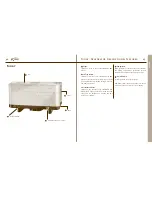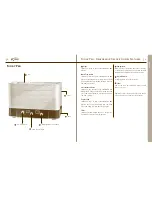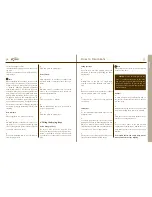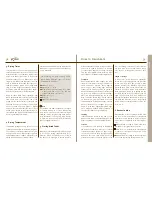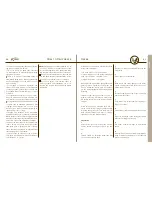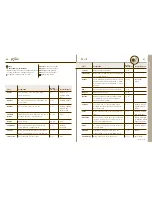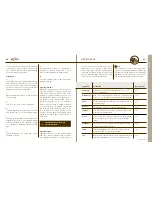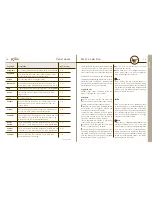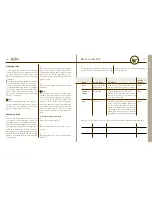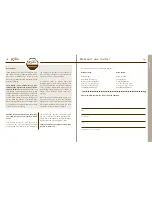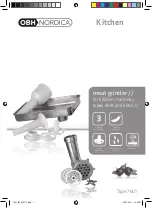
60
61
Rehydrating meat is usually completed in 1 to
4 hours by soaking in an equal amount of wa-
ter (in the refrigerator), or by gently simmering
in water. Use only enough water to cover meat.
If you drain reconstituted foods, save the liq-
uid. This liquid has great nutritional value. Freeze
for use in soups, leathers, pies or compotes.
Do not add spices, salt, bouillon cubes or
tomato products until vegetables are recon-
stituted and cooked. These items may hinder
rehydration.
You may use liquids other than water, includ-
ing juices, consommé, milk, etc.
Try not to use more liquid than necessary
for reconstitution, as nutrients will be drained
away with the excess.
There is no need to reconstitute ahead of
time when making soups. Dried vegetables can
be added directly to the soup about one hour
before serving.
For chopped or shredded vegetables and
fruits to be used in cookies, no reconstitution
is usually needed. If the pieces are crisp and
dry, sprinkle with 1 Tbsp. water per 1 /2 cup of
dried food.
For vegetables and fruits to be used in souf-
flés, pies, quick breads, doughs or batters, use
2 parts water to 3 parts (by volume) dried food.
For vegetables and fruits which will be cooked
in liquid, such as vegetable side dishes, fruit
toppings, and compotes, use 1 to 1 1 /2 parts
water to 1 part dried food. Extra liquid may be
required for proper cooking.
Chopped and shredded foods reconstitute
quickly. Generally, 15 to 30 minutes is sufficient.
Whole pieces or slices of fruit or vegetables and
meat cubes take longest to reconstitute and are
best left to soak in the refrigerator overnight.
Some foods take longer to reconstitute than
others. Carrots and beans require more time
than green peas or potatoes. A rule of thumb:
those that take the longest to dehydrate will
take the longest to reconstitute.
If food cannot be soaked as long as neces-
sary, place in boiling water, remove from stove,
and let stand 2 to 3 hours.
Herbs
Dried herbs are much more flavorful than fresh
herbs. Some guidelines:
1 tsp dried herbs = 1 Tbsp fresh herbs
1 / 4 tsp dried ginger = 1 tsp fresh grated ginger
1 tsp onion powder = 1 medium onion
1 / 8 tsp dried garlic = 1 clove garlic
Many herbs can be harvested through the entire
growing season. Two-thirds of the plant may
be cut, leaving the rest to grow. Once plants
are cut, regular cuttings will prevent them from
flowering.
Flowers, seeds, leaves and stems can all be
used for seasoning. If flowers are used in teas,
dry them whole. Remove any tough or discolor-
ed parts.
Dried herbs have an excellent shelf life. If
stored under normal storage conditions, they
will keep their potency for four years or more.
Dark colored containers are best for storage.
Light fades color and weakens flavors.
Preparation
1
Select herbs just before the plant blooms.
Leaves should be fully developed, yet ten-
der.
2
Flowers should be harvested when they first
open and are still very fresh.
3
Harvest on a sunny morning after the dew has
evaporated.
4
Herbs require no pretreatment.
5
Wash leaves and stems lightly in cold water.
Spread on absorbent towel, shake off any visi-
ble moisture or pat dry.
6
Be sure to remove any brown spots and insect
debris from the leaves.
7
Strip leaves from larger stems. Dry parsley or
sage on the stems.
8
Entire pods or seeds of chili peppers can be dried.
9
Herbs can be placed on the drying trays within
minutes of picking and cleaning.
10
Use either mesh insert trays or fruit leather
sheets.
11
Herbs will be brittle and crumble easily when
dried. Some leaves will darken in color but that
does not affect flavor.
ENGLISH
How to Dehydrate




